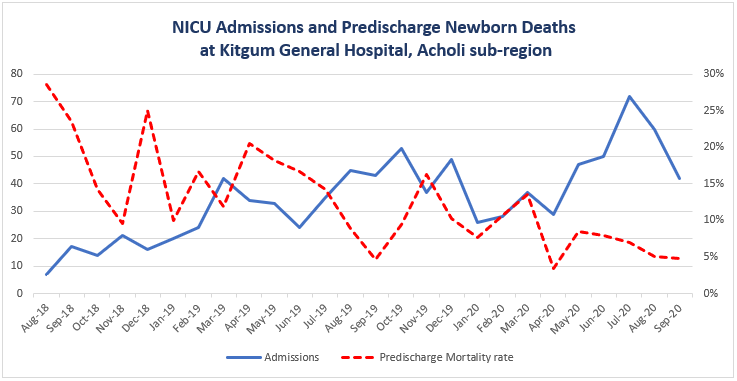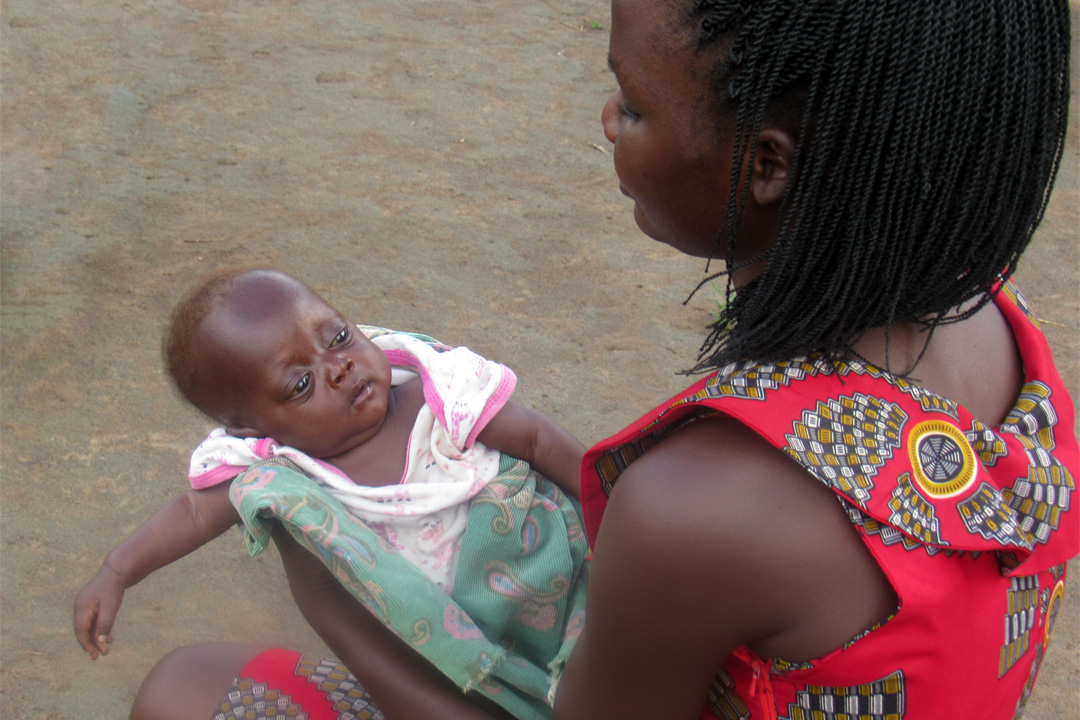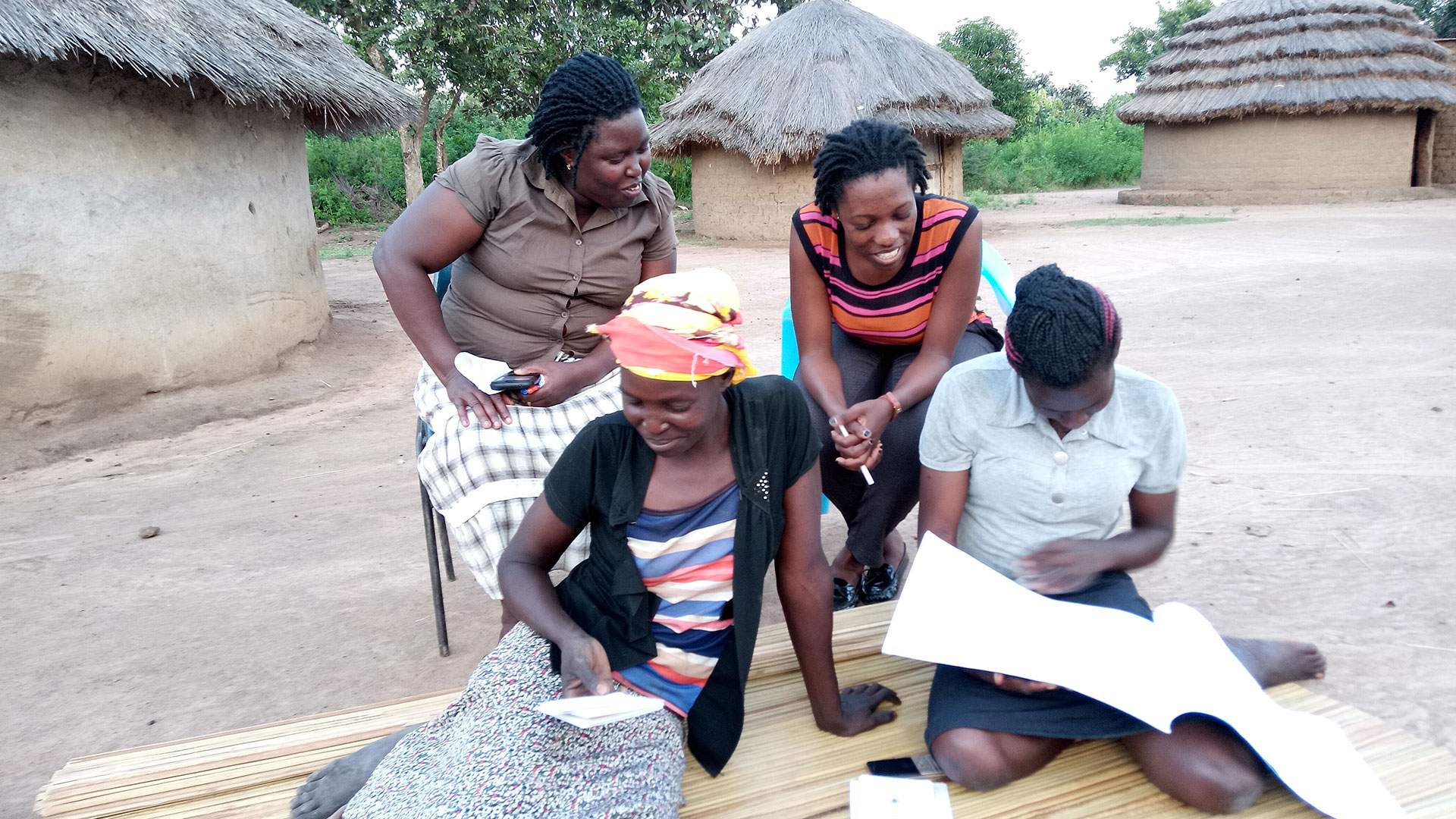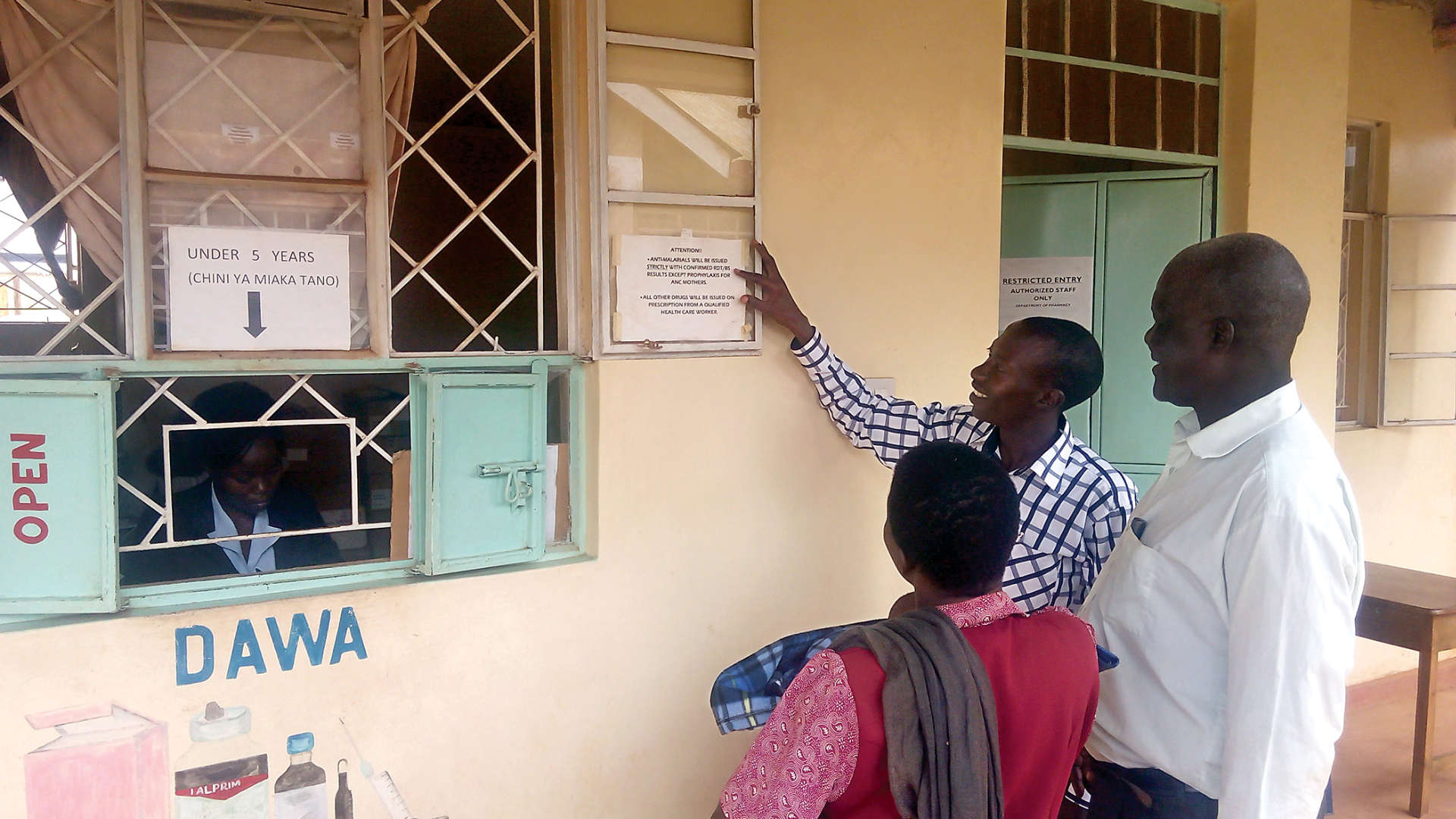Innocent Rubagakene was born too soon, delivered at only six months old at Pajule Health Center IV, Pader District, in northern Uganda. His mom’s labor pains had begun while she was planting sweet potato vines. Within a few hours of arrival at the health center, she delivered a weak and pale baby boy weighing only 1.3kg. The baby’s odds of survival without damage to the bowel and brain was estimated at 20%.
Innocent was unable to breathe and required support to breastfeed, so he was immediately transferred to Kitgum General Hospital, 55 km away, to receive comprehensive emergency obstetric and newborn care.
Today, Innocent is a four-month old, 6.8 kg, fully immunized, baby boy. How did he beat the odds?
In part, through the improved perinatal care that was achieved with the assistance of the USAID-funded Regional Health Integration to Enhance Services in Northern Uganda (RHITES-N, Acholi) Activity.
Addressing Perinatal Mortality Rates
Preterm births contribute to the preventable newborn death rate in the Acholi subregion of Uganda. Perinatal mortality rates (PMR) remain high, with the PMR for Northern region at 26 per 1,000 live births, according to Uganda’s District Health Information System 2. Gulu and Kitgum districts recorded the highest fatalities at 35 per 1,000 live births and 28 per 1,000 respectively as of December 2018.
Assessments carried out in December 2018 at 11 high-volume facilities including all six hospitals and at five Level IV Health Centers (HCs) which manage 60% of newborn cases, revealed the following:
- 15% (5/33) showed sufficient knowledge on the use of antenatal corticosteroids to prevent respiratory distress in premature babies;
- 37% knew the classification for a “small” or “preterm” baby; and
- 37.5% had sufficient knowledge on conditions necessitating referral for preterm babies and 26% (9/34) were knowledgeable on how to initiate kangaroo mother care (carrying babies skin to skin to keep baby’s body warm, improve bonding, increase breast milk supply, stabilize baby’s heart rate and breathing pattern, and more).
To improve newborn quality of care and survival, the RHITES-N, Acholi Activity is scaling up newborn care units at six hospitals, the Kitgum General Hospital, and Level IV HCs. RHITES-N, Acholi also has helped plan kangaroo care spaces at more than 40 Level III HCs in the subregion.
RHITES-N, Acholi embarked on a two-pronged improvement approach supporting the facilities to fully incorporate quality neonatal health standards to reduce neonatal mortality. Activities included were both structural and process oriented. These activities included:
- Setting up newborn care intensive units (NCIU) and NCIU spaces; focusing on learning visits; providing basic equipment and supplies, protocols, and guidelines; and establishing admission and referral criteria;
- Providing health worker trainings and skills attachments, including placing health care workers and managers at state-of-the-art NICU facilities to gain hands-on knowledge; motivating providers; and enhancing pre-service training and continuing professional development/mentorship opportunities;
- Initiating quality improvement cycles related to prematurity care, feeding, birth asphyxia, infection prevention and control, kangaroo mother care, and documentation – all to improve patient care and safety; and
- Establishing monthly mentorship and coaching visits, quarterly learning sessions, use of low-cost technology and data quality assessments for improved sharing of information and use of data.
Dramatic Decreases in Preterm Mortality
“Because of the training we received, we can confidently handle [preterm] babies,” said Dr. Robert Casta Ouma, NICU Focal Person at Kitgum General Hospital. “Before, we had minimal knowledge and motivation of taking care of them. We didn’t know that we had the equipment. We never isolated the baby. We would put the baby on the same bed as the mother and monitor them during ward rounds. We didn’t know that two-hour monitoring was important.”

By August 2020, RHITES-N, Acholi noted a 77.8% increase – seven-fold – of new admissions at the NICU. Also, the pre-discharge mortality rate decreased from 80% to less than 10%.
Innocent is one of many lucky preterm babies. He received excellent quality newborn care at Kitgum General Hospital and continues to thrive.



